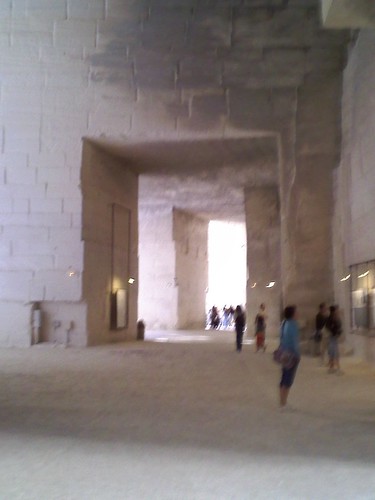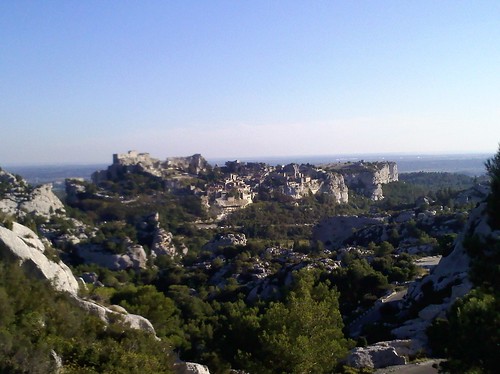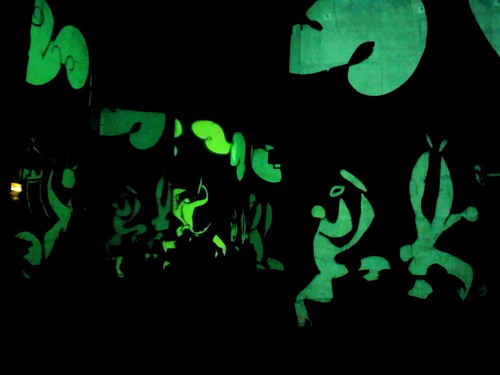 The monolithic limestone quarries are themselves inspirational architectural spaces. Massive passageways and expansive "rooms" are reminiscent of monumental Egyptian burial sites. Further considering the bright white limestone walls, reminiscent of so many churches, the mining sites are best described as cathedrals.
The monolithic limestone quarries are themselves inspirational architectural spaces. Massive passageways and expansive "rooms" are reminiscent of monumental Egyptian burial sites. Further considering the bright white limestone walls, reminiscent of so many churches, the mining sites are best described as cathedrals.Within one such abandoned quarry, an artistic installation of picture and sound is on display. This year they are featuring the works of Pablo Picasso. When reading about the exhibition, I had expected something like a typical art museum - a series of still photos and solemn observers. The cathedral d'images provides a much different experience. Instead of static displays, the images constantly scroll through the vast walls of the quarry. Children dance on images projected onto the floor to dramatic tunes. The musical selection is diverse, juxtaposing the bull fighting anthems from Carmen with the serious theme from the Godfather. And yet, each selection fits the mood of the images appearing all around.


![Reblog this post [with Zemanta]](http://img.zemanta.com/reblog_e.png?x-id=515c393d-d132-4439-adf9-f924900df1e3)

No comments:
Post a Comment